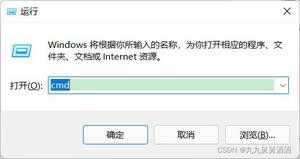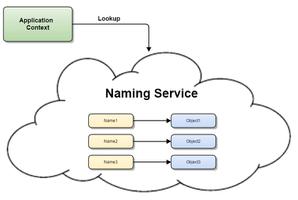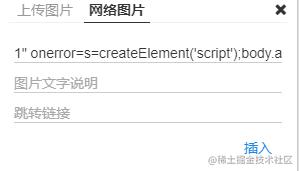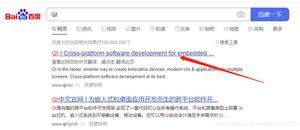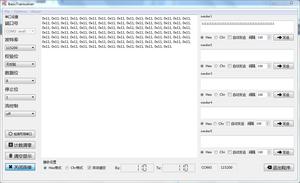MySQL视图是否总是进行全表扫描?
我正在尝试优化使用MySQL 5.1中的视图的查询。似乎即使我从视图中选择1列,它始终会进行全表扫描。那是预期的行为吗?
该视图只是我在下面的第一个查询中指定的表的SELECT“这些表中的所有列-NOT *”。
这是当我从组成视图的查询中选择索引列PromotionID时的解释输出。如您所见,它与视图上的输出有很大的不同。
EXPLAIN SELECT pb.PromotionID FROM PromotionBase pb INNER JOIN PromotionCart pct ON pb.PromotionID = pct.PromotionID INNER JOIN PromotionCode pc ON pb.PromotionID = pc.PromotionID WHERE pc.PromotionCode = '5TAFF312C0NT'\G;*************************** 1. row ***************************
id: 1
select_type: SIMPLE
table: pc
type: const
possible_keys: PRIMARY,fk_pc_pb
key: PRIMARY
key_len: 302
ref: const
rows: 1
Extra:
*************************** 2. row ***************************
id: 1
select_type: SIMPLE
table: pb
type: const
possible_keys: PRIMARY
key: PRIMARY
key_len: 4
ref: const
rows: 1
Extra: Using index
*************************** 3. row ***************************
id: 1
select_type: SIMPLE
table: pct
type: const
possible_keys: PRIMARY
key: PRIMARY
key_len: 4
ref: const
rows: 1
Extra: Using index
3 rows in set (0.00 sec)
当我从视图中选择相同的东西时的输出
EXPLAIN SELECT vpc.PromotionID FROM vw_PromotionCode vpc WHERE vpc.PromotionCode = '5TAFF312C0NT'\G;*************************** 1. row ***************************
id: 1
select_type: PRIMARY
table: <derived2>
type: ALL
possible_keys: NULL
key: NULL
key_len: NULL
ref: NULL
rows: 5830
Extra: Using where
*************************** 2. row ***************************
id: 2
select_type: DERIVED
table: pcart
type: index
possible_keys: PRIMARY
key: PRIMARY
key_len: 4
ref: NULL
rows: 33
Extra: Using index
*************************** 3. row ***************************
id: 2
select_type: DERIVED
table: pb
type: eq_ref
possible_keys: PRIMARY
key: PRIMARY
key_len: 4
ref: readyinteractive.pcart.PromotionID
rows: 1
Extra:
*************************** 4. row ***************************
id: 2
select_type: DERIVED
table: pc
type: ref
possible_keys: fk_pc_pb
key: fk_pc_pb
key_len: 4
ref: readyinteractive.pb.PromotionID
rows: 249
Extra: Using where
*************************** 5. row ***************************
id: 3
select_type: UNION
table: pp
type: index
possible_keys: PRIMARY
key: pp_p
key_len: 4
ref: NULL
rows: 1
Extra: Using index
*************************** 6. row ***************************
id: 3
select_type: UNION
table: pb
type: eq_ref
possible_keys: PRIMARY
key: PRIMARY
key_len: 4
ref: readyinteractive.pp.PromotionID
rows: 1
Extra:
*************************** 7. row ***************************
id: 3
select_type: UNION
table: pc
type: ref
possible_keys: fk_pc_pb
key: fk_pc_pb
key_len: 4
ref: readyinteractive.pb.PromotionID
rows: 249
Extra: Using where
*************************** 8. row ***************************
id: 4
select_type: UNION
table: pcp
type: index
possible_keys: PRIMARY
key: pcp_cp
key_len: 4
ref: NULL
rows: 1
Extra: Using index
*************************** 9. row ***************************
id: 4
select_type: UNION
table: pb
type: eq_ref
possible_keys: PRIMARY
key: PRIMARY
key_len: 4
ref: readyinteractive.pcp.PromotionID
rows: 1
Extra:
*************************** 10. row ***************************
id: 4
select_type: UNION
table: pc
type: ref
possible_keys: fk_pc_pb
key: fk_pc_pb
key_len: 4
ref: readyinteractive.pb.PromotionID
rows: 249
Extra: Using where
*************************** 11. row ***************************
id: 5
select_type: UNION
table: ppc
type: index
possible_keys: PRIMARY
key: ppc_pc
key_len: 4
ref: NULL
rows: 1
Extra: Using index
*************************** 12. row ***************************
id: 5
select_type: UNION
table: pb
type: eq_ref
possible_keys: PRIMARY
key: PRIMARY
key_len: 4
ref: readyinteractive.ppc.PromotionID
rows: 1
Extra:
*************************** 13. row ***************************
id: 5
select_type: UNION
table: pc
type: ref
possible_keys: fk_pc_pb
key: fk_pc_pb
key_len: 4
ref: readyinteractive.pb.PromotionID
rows: 249
Extra: Using where
*************************** 14. row ***************************
id: 6
select_type: UNION
table: ppt
type: index
possible_keys: PRIMARY
key: ppt_pt
key_len: 4
ref: NULL
rows: 1
Extra: Using index
*************************** 15. row ***************************
id: 6
select_type: UNION
table: pb
type: eq_ref
possible_keys: PRIMARY
key: PRIMARY
key_len: 4
ref: readyinteractive.ppt.PromotionID
rows: 1
Extra:
*************************** 16. row ***************************
id: 6
select_type: UNION
table: pc
type: ref
possible_keys: fk_pc_pb
key: fk_pc_pb
key_len: 4
ref: readyinteractive.pb.PromotionID
rows: 249
Extra: Using where
*************************** 17. row ***************************
id: NULL
select_type: UNION RESULT
table: <union2,3,4,5,6>
type: ALL
possible_keys: NULL
key: NULL
key_len: NULL
ref: NULL
rows: NULL
Extra:
17 rows in set (0.18 sec)
回答:
MySQL中的视图未编制索引,因此就其本质而言,每次访问时都需要进行全面扫描。一般而言,这使Views仅在以下情况下才真正有用:您有一个相当复杂的静态查询,该查询返回一个很小的结果集,并且您计划每次都获取整个结果集。
当然,视图将使用基础表上的索引,以便对视图本身进行优化(否则它们将毫无意义),但是由于视图上没有索引,因此WHERE不可能在要优化的视图上查询。
为Views构造索引无论如何都是昂贵的,因为尽管我没有尝试分析任何Views,但我相当确定在幕后构造了一个临时表,然后返回了结果集。构造临时表已经花费了很多时间,我不希望这样的视图也试图猜测需要哪些索引。这就提出了第二点,即MySQL当前不提供一种指定用于View的索引的方法,因此它如何知道需要对哪些字段进行索引?它会根据您的查询猜测吗?
您可能考虑使用临时表,因为这样您可以在临时表中的字段上指定索引。但是,根据经验,这往往非常缓慢。
如果此视图包含的全部是SELECT ALL FROM
table1,table2,table3;那么我不得不问为什么这个查询根本需要在View中?如果出于某种原因它绝对必要,则您可能希望使用存储过程来封装查询,因为这样您就可以获得最佳性能,同时保持对结果集的数据库调用更为简单的好处。
以上是 MySQL视图是否总是进行全表扫描? 的全部内容, 来源链接: utcz.com/qa/416191.html

